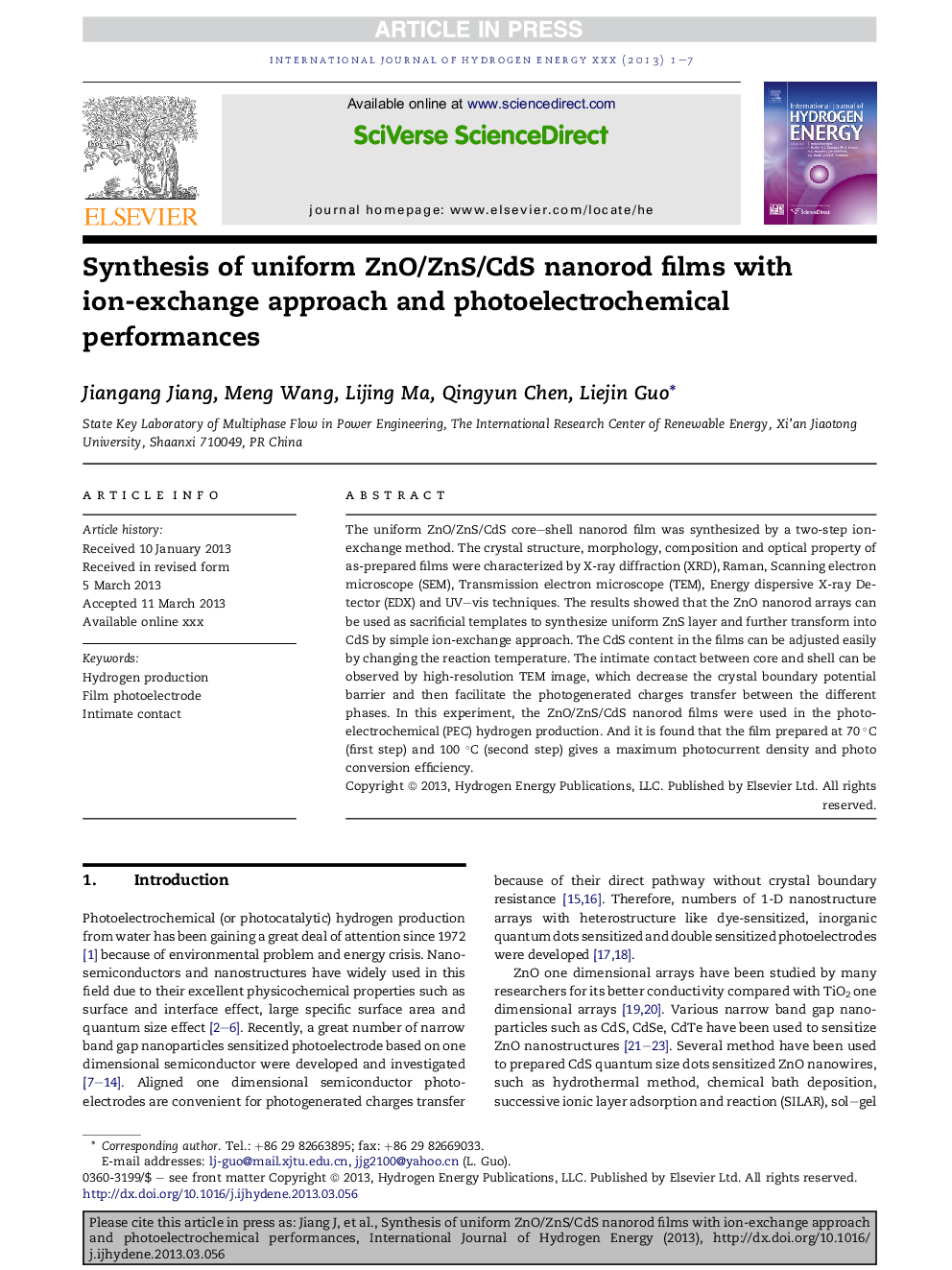| Article ID | Journal | Published Year | Pages | File Type |
|---|---|---|---|---|
| 7721703 | International Journal of Hydrogen Energy | 2013 | 7 Pages |
Abstract
The uniform ZnO/ZnS/CdS core-shell nanorod film was synthesized by a two-step ion-exchange method. The crystal structure, morphology, composition and optical property of as-prepared films were characterized by X-ray diffraction (XRD), Raman, Scanning electron microscope (SEM), Transmission electron microscope (TEM), Energy dispersive X-ray Detector (EDX) and UV-vis techniques. The results showed that the ZnO nanorod arrays can be used as sacrificial templates to synthesize uniform ZnS layer and further transform into CdS by simple ion-exchange approach. The CdS content in the films can be adjusted easily by changing the reaction temperature. The intimate contact between core and shell can be observed by high-resolution TEM image, which decrease the crystal boundary potential barrier and then facilitate the photogenerated charges transfer between the different phases. In this experiment, the ZnO/ZnS/CdS nanorod films were used in the photoelectrochemical (PEC) hydrogen production. And it is found that the film prepared at 70 °C (first step) and 100 °C (second step) gives a maximum photocurrent density and photo conversion efficiency.
Keywords
Related Topics
Physical Sciences and Engineering
Chemistry
Electrochemistry
Authors
Jiangang Jiang, Meng Wang, Lijing Ma, Qingyun Chen, Liejin Guo,
